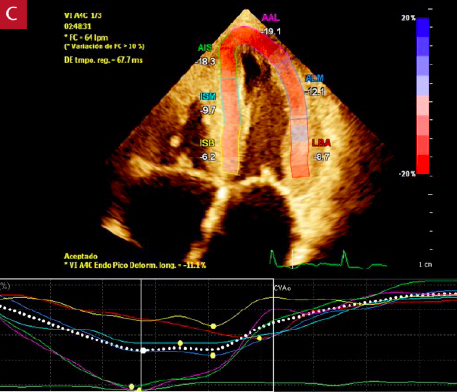Cardiac amyloidosis: Experience in a national reference cardiovascular institute
DOI:
https://doi.org/10.47487/apcyccv.v1i2.40Keywords:
amyloidosis, heart failure, peruAbstract
Objectives: To determine the clinical, imaging and laboratory characteristics and one year after diag- nosis survival of patients with cardiac amyloidosis in a national reference hospital.
Materials and methods: Case series study. We evaluated the clinical characteristics, complementary examinations and survival of patients with cardiac amyloidosis diagnosed, treated and followed up in the Clinical Cardiology service of the National Cardiovascular Institute – INCOR EsSalud in Lima, Peru.
Results: We found eight patients with diagnosis of cardiac amyloidosis. The median age was 64.5 years and 75% were male. The etiology of cases was unspecified cardiac amyloidosis (25%), transthyretin cardiac amyloidosis (37.5%), and light chain cardiac amyloidosis (37.5%). Symptomatic heart failure (NYHA II-III) was the most common initial presentation symptom (87.5%). The most frequent extracar- diac manifestations were: sensory-motor neuropathy (62.5%), musculoskeletal (37.5%), nephropathy (25%), bilateral carpal tunnel syndrome (25%), monoclonal gammopathies (25%) and refractory pleural effusion (25 %). Survival at one year was 75% and the cause of the 2 deaths was sudden death.
Conclusions: In this study of cardiac amyloidosis at a specialized center, the most frequent clinical manifestations were heart failure and sensory-motor neuropathy. Mortality was 25% per year, and in all cases as sudden death.
Downloads

Downloads
Additional Files
Published
Issue
Section
License
Copyright (c) 2020 Archivos Peruanos de Cardiología y Cirugía Cardiovascular

This work is licensed under a Creative Commons Attribution 4.0 International License.














